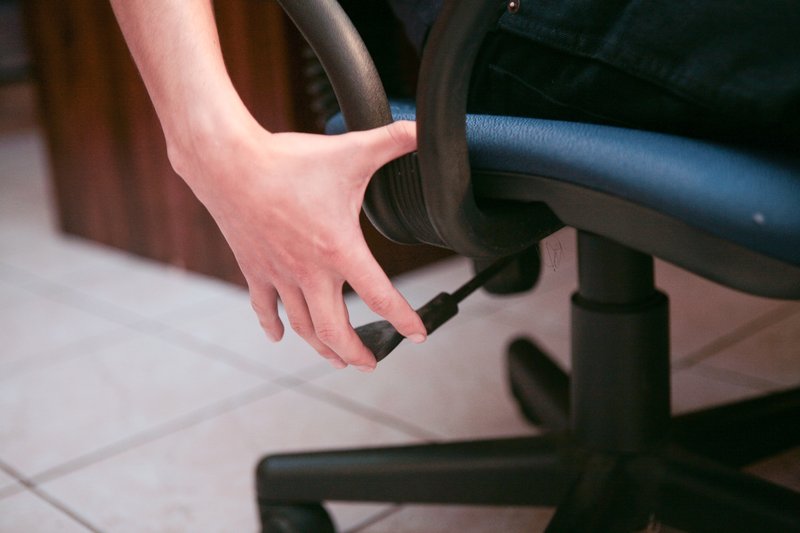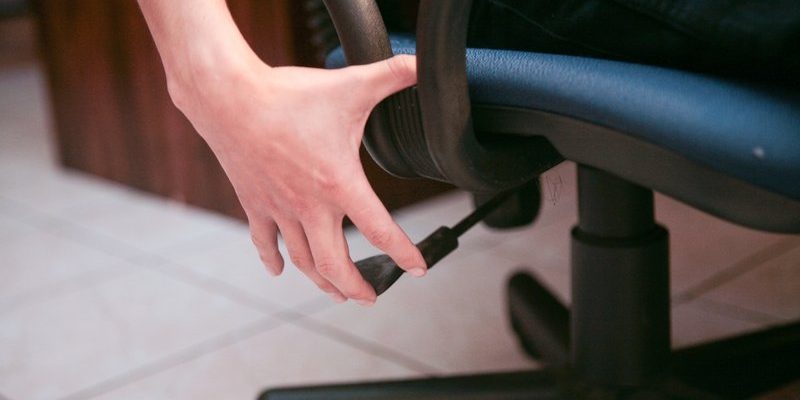
Here’s the thing: adjusting a handleset for a tighter fit isn’t rocket science, but it can seem intimidating if you’ve never done it. You don’t want to accidentally make things worse, damage the door, or—worst of all—lock yourself out. But with a little patience and the right instructions, you can make your front door feel as secure and solid as the day it was installed.
Let’s walk through the reasons a handleset gets loose, the steps to fix it, and a few tips to help your adjustment last longer. I’ll use common examples from Kwikset and Schlage handlesets, but honestly, these tips work for almost any modern brand.
Why Handlesets Get Loose Or Wobbly In The Door Frame
Before you start turning screws, it helps to know what’s really going on behind the scenes. Most door handlesets attach to the door with a few screws, a mounting plate, and a latch that slides into the door frame. Over time, these parts see a lot of action. Every slam, push, or pull sends a little shock through the mechanism—and those add up.
You might be wondering, “Does it matter if my handleset wiggles a little?” Short answer: Yes. A loose fit can make the lock less secure, open you up to drafts, or even cause the latch to miss the strike plate. You’ll notice it most when you turn the handle and the door doesn’t catch right away. That’s a sign the parts are out of sync and need adjusting.
Here’s a quick reality check: Handlesets aren’t “set it and forget it.” With humidity changes, temperature swings, and plain old use, even the most expensive sets will need a tune-up now and then. If you’re using a universal handleset (the kind that promises to fit any door), you might deal with this even more, because universal sets often use a more generic mounting system.
Tools You’ll Need To Adjust A Handleset
Let me explain what you actually need before starting. No one likes a project that involves frantic trips back and forth to the toolbox. For 99% of handleset adjustments, you’ll be fine with these basics:
- Phillips-head screwdriver (the classic cross-shaped one—you’ll use this the most)
- Flathead screwdriver (for prying off covers or plates)
- Allen wrench (some designer brands, like Baldwin, use these on the set screws)
- Measuring tape (to double-check the placement of the handleset and strike plate)
- WD-40 or graphite lubricant (optional, but handy if things feel stiff or squeaky)
If your handleset is electronic (think smart locks from Schlage or Yale), you may also need to reset or sync the lock after adjusting. Keep the battery handy in case it needs to be removed or replaced during troubleshooting.
How To Test If Your Handleset Needs Adjusting
You might be tempted to start turning screws right away, but take a breath—the first step is a simple test. Close your door as you normally would and pull the handle. Feel any wobble? Try locking and unlocking the door. Does the latch catch with a satisfying “click,” or does it feel loose or misaligned?
Next, look closely at the gap between the door and the frame. If you see uneven spacing or the latch doesn’t land in the center of the strike plate, that’s a red flag. Sometimes, you’ll hear a metallic “clunk” instead of a solid click. This is a sign the lock and strike plate are out of sync.
Another quick test: With the door open, gently wiggle the handle in all directions. If the whole assembly moves, it’s likely the mounting screws or the latch need tightening. If only the exterior handle moves, you might need to check the way the handleset is paired to the mounting plate inside the door.
Step-By-Step: Adjusting The Handleset For A Tighter Fit
Let’s get into the nitty-gritty. Here’s a step-by-step way to adjust a handleset for a tighter fit in the door frame:
- Remove the handleset: Look for visible screws—usually on the interior side of the door. Unscrew them carefully and set aside. If the handleset has a trim or escutcheon plate, use the flathead screwdriver to pry it off.
- Check the mounting plate and screws: Give the mounting plate a once-over. Tighten all screws evenly using your Phillips-head screwdriver. If any are stripped or feel loose, replace them with longer screws.
- Inspect the latch and strike plate: With the handleset off, look at the latch mechanism. Make sure the latch lines up with the strike plate on the door frame. If it’s misaligned, you may need to shift the strike plate up, down, or side to side. Use your tape measure to center it.
- Reinstall and test: Put the handleset back together, making sure everything lines up. Tighten the screws—but not too much, or you might strip them. Test the handle, latch, and lock a few times to make sure everything feels solid and synced.
Sometimes, you’ll need to repeat these steps or reset the lock if it’s electronic. Electronic handlesets might need a battery pull or a code reset after adjustment. That’s normal, especially with smart locks.
Troubleshooting Common Handleset Issues
What if you follow all the steps and the handleset still feels loose? Don’t stress. Here’s what might be going on:
- Screws are stripped or too short: This is a classic problem, especially on old doors. Try a slightly longer screw (but make sure it doesn’t poke out the other side of the door!).
- The door or frame is warped: Over years, wood can shift from humidity. In those cases, you might need to shim the mounting plate or even sand down the frame for a better fit.
- Strike plate problems: If the latch doesn’t meet the strike plate just right, the whole mechanism will feel loose. Try moving the strike plate slightly or using a strike plate reinforcement kit (sold at most hardware stores).
- Electronic lock not syncing: If you have a smart handleset, sometimes the locking mechanism gets out of sync with the handle position. Remove the battery, wait 10 seconds, replace it, and re-enter your code. This resets most Schlage and Yale models.
If you get stuck, take a photo of your handleset’s inside and outside before you start taking it apart. That way, you can quickly pair everything back together if you lose track.
Tips For Keeping Handlesets Tight And Secure
Honestly, the key to a long-lasting tight fit is simple maintenance. Don’t wait until your handleset feels like it’s about to fall off. Every few months, give it a quick check:
- Give all mounting screws a quarter turn tighter. This keeps things from loosening up over time.
- Lubricate the latch and keyway. A quick squirt of graphite or WD-40 keeps things moving smoothly and prevents the lock from sticking or “jamming.”
- Inspect the door frame for signs of shifting or cracking. If you spot gaps or movement, address the frame issue before the handleset adjustment—otherwise, you’re just treating the symptom, not the cause.
If you have a universal handleset, check the adapter plates and additional spacers they sometimes include. These pieces help fit a wide range of door thicknesses but can also come loose more easily than brand-specific models.
When To Replace Your Handleset Instead Of Adjusting
Let me be real: Sometimes a handleset is just too far gone. If you’ve tightened the screws a dozen times, replaced hardware, and it still feels loose, it might be time for a new set. This can especially happen with cheaper universal handlesets, where the internal components wear out faster.
Look for these signs:
- Stripped screw holes that won’t hold new screws, even with wood filler or toothpicks as a hack
- Broken latch mechanisms that don’t extend or retract smoothly, even after cleaning or resetting
- Visible cracking or bending in the mounting plate, which means the metal is compromised
- Electronic locks that refuse to sync or reset despite battery replacement and code resets
If you’re dealing with a high-end set from Schlage, Kwikset, or Yale, check if you’re within the warranty period. Many brands have surprisingly generous warranties for mechanical parts, especially if you have your original receipt.
Alternatives To Adjusting The Handleset
You might be wondering if you can avoid the screwdriver altogether. After all, not everyone loves home improvement projects.
One option is to install a strike plate reinforcement kit. This doesn’t touch the handleset at all—instead, it tightens the way the door latch meets the frame. It’s a quick fix if the main problem is the frame, not the handleset.
Another fix is to use foam weatherstripping along the edge of the door frame. This isn’t a true repair, but it can help close small gaps and give you a tighter feel. It won’t fix a wobbly lock, but it can cut drafts and bumps.
If your handleset keeps coming loose and you’re renting, consider a universal replacement handleset that installs in the same holes. Just make sure to measure carefully, since universal sets don’t always pair perfectly with every brand of door.
Final Thoughts: Making Your Handleset Fit Like New
A tight handleset isn’t just about feeling sturdy—it’s about security, peace of mind, and the simple pleasure of a door that closes with a satisfying click. Adjusting a handleset for a tighter fit in the door frame is something almost anyone can do with a few basic tools and a bit of patience.
If you’ve never tackled a project like this before, don’t worry: You’ve got this. Slow down, pay attention to details, and don’t be afraid to try different adjustments until you get it right. Most importantly, remember that regular maintenance goes a long way. Whether you use a top-tier brand like Schlage or Kwikset, or you’re rocking a no-name universal handleset, a little TLC will keep your door working smoothly for years to come.
